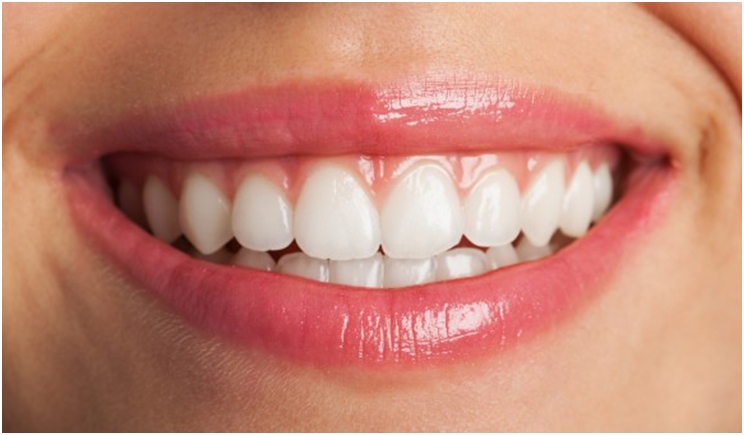
Today’s internet has inspired a do-it-yourself culture where empowered consumers now take control of everything in their lives from booking their own travel arrangements to self-publishing their own novels. But increasingly, consumers have adopted this same home-cottage approach to diagnosing and maintaining their own health, including their dental health. Information, often times misleading or outright fraudulent, is just a Google search away. And it should have us in the dental field more than a little concerned.
When it was first introduced, the in-home use of over-the-counter teeth whitening applications didn’t bother me much. Sure, there were sensitivity issues and possible gum irritation problems. But we all know that whitening, as a professional service, takes up valuable chair time that could be better used for more critical dental procedures. Allowing patients to shoulder the task of performing their own tooth whitening procedures at home seemed initially like a win-win.
But, never satiated for long and using search engines to fuel their quests, consumers inevitably started exploring stronger tooth whitening options and even alternative methods. These aren’t your typical ADA approved over-the-counter solutions, and may actually pose a risk to both a patient’s dental health and overall health.
The Dangers of Hydrogen Peroxide
Inquisitive consumers have learned that the active bleaching ingredient in whitening agents is peroxide. Following the lead of manufacturers, who market ancillary product lines as extra-strength, supreme, and fast-acting, some of our patients are quick to fall into the “more is better” trap. This can be dangerous and even fatal when it comes to the home application of peroxides. While reasonably benign at strengths under 10%, hydrogen peroxide becomes a lot more caustic to humans in stronger concentrations.
Enter “food-grade” hydrogen peroxide. This deceptively labeled concentration (containing 30% or more hydrogen peroxide) is being peddled by some online alternative therapy charlatans as a powerful cure-all, allegedly because infirmities such as cancer and AIDS can be attributed to low oxygen levels in the blood. Of course, one of the poisonous attributes to ingesting higher concentrations of hydrogen peroxide is the amount of oxygen it produces.
The online marketers claim that oxygen will enrich the bloodstream and make it a hostile environment for malignant diseases. But none of these claims has been authenticated by research. And a very real truth is that drinking undiluted food grade hydrogen peroxide could allow oxygen levels to exceed maximum solubility in the bloodstream. In that case, venous or arterial gas embolism could occur. Also ironic, in light of this hucksterism, is that some research suggests hydrogen peroxide actually acts as a carcinogen.
As well as a cure-all, a number of e-books, online videos, and websites tout food grade hydrogen peroxide for its alleged efficacy in teeth whitening. It’s scary what risks people will take in search of the next great brightening method, especially when research has shown that whitening with a 6% solution is just as effective as using a more powerful formula, without the dangerous side effects.
The Side Effects of Charcoal
Another whitening trend that’s come along is the use of charcoal toothpaste. Activated charcoal has been used, most notably in poison control centers, to “soak up” toxins a sufferer may have ingested. Building on this logic, the thinking goes that charcoal will absorb stain-causing bacteria in the mouth, and its coarse structure provides the abrasive action to clear pearly whites of discoloration.
There are no studies that indicate any of this is actually true, and tooth enamel is probably the only surface that charcoal is eroding away. Just as with peroxide-based whiteners, tooth and gum sensitivity and ingestion problems come into play. It will also turn your tongue black!
One of the chief side effects of ingesting too much charcoal is its interference with any medicines you might be taking. The charcoal can literally soak it up. One gastroenterologist cited in Eater even warned women that charcoal ingestion, accidental or otherwise, could interfere with the effectiveness of their birth control pill.
Your Role
The ADA has come out against the use of these new whitening procedures until further study can be done. The organization recommends that any home whitening program should be undertaken only after consultation with a dentist, adding that this is especially important for patients “with fillings, crowns, and extremely dark stains.”
In light of the misinformation and outright chicanery going on in the market space, I feel it’s our duty as dental professionals to advise our patients about the increasing proliferation of these unorthodox whitening methods and steer them to safer and ADA approved methods. First step? When you notice that your patients are bleaching their teeth, ask them about their teeth whitening regimen, and be on the lookout for anything that might be unusual or unsafe.
Dr. Harwood is a graduate of the Tufts University School of Dental Medicine with an advanced degree in endodontics. He was the first endodontist in New York to use a surgical operating microscope. Also, he is a member of the ADA and a specialist member of the American Association of Endodontists. He has taught endodontics at the Tufts University School of Dental Medicine, New York University School of Dentistry, and the Metropolitan Hospital Center. He can be reached at adamharwooddmd.com.
Related Articles
Advances in Stem Cell Research Promise Dental Regeneration
Authorities Crack Down on Illegal Tooth Whitening
Permanent Teeth Whitening Eclipses Bleaching Methods











